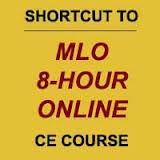
- How Do Reverse Mortgages Work
- Types of Reverse Mortgage Loans
- How Much Money Can You Borrow
- What Can You Do with the Money
- Long Term Care & Reverse Mortgages
- Purchase a Home with a Reverse Mortgage
- Myths About Reverse Mortgages
- Pros and Cons of Reverse Mortgages
- Social Security & Medicare Benefits
- The Reverse Mortgage Loan Proces
** Click Here to Download A Free Guide On “How To Use Your Home To Stay At Home”
How Do Reverse Mortgages Work
Homeowners 62 and older who have paid off their mortgages or have only small mortgage balances remaining are eligible to participate in HUD’s reverse mortgage program. The program allows homeowners to borrow against the equity in their homes.
Homeowners can receive payments in a lump sum, on a monthly basis (for a fixed term or for as long as they live in the home), or on an occasional basis as a line of credit. Homeowners whose circumstances change can restructure their payment options.
Unlike ordinary home equity loans, a HUD reverse mortgage does not require repayment as long as the borrower lives in the home. Lenders recover their principal, plus interest, when the home is sold or refinanced by the heirs. The remaining value of the home goes to the homeowner or to his or her survivors. If the sales proceeds are insufficient to pay the amount owed, HUD will pay the lender the amount of the shortfall. The Federal Housing Administration, which is part of HUD, collects an insurance premium from all borrowers to provide this coverage.
 The size of reverse mortgage loans is determined by the borrower’s age, the interest rate, and the home’s value.
The size of reverse mortgage loans is determined by the borrower’s age, the interest rate, and the home’s value.
The older a borrower, the larger the percentage of the home’s value that can be borrowed.
For example, based on a loan at today’s low interest rates, a 65-year-old could borrow up to 60 percent of the home’s value, a 75-year-old could borrow up to 70 percent of the home’s value, and an 85-year-old could borrow almost to 80 percent of the home’s appraised value — up to the FHA loan limit for each city and county.
There are no asset or income limitations on borrowers receiving HUD’s reverse mortgages.
There are also no limits on the value of homes qualifying for a HUD reverse mortgage. However, the amount that may be borrowed is capped by the maximum FHA loan limit of $625,500 through December 31, 2011.
HUD’s reverse mortgage program collects funds from insurance premiums charged to borrowers. Senior citizens are charged 2 percent of the home’s value as an up-front payment plus one-half percent on the loan balance each year. These amounts are usually paid by the lender and charged to the borrower’s principal balance.
FHA’s mortgage insurance guarantees to the borrowers that they will continue to receive their loan proceeds even if the Lender goes bankrupt. The FHA insurance also guarantees Lenders that they will get their money back with interest and fees even if the homeowners outlive the longevity tables or the property values decrease. Thus while the FHA mortgage insurance increases the initial cost of getting a HECM reverse mortgage, it also allows the Lenders to sell HECM reverse mortgages at interest rates well below those of FannieMae and private lenders.





